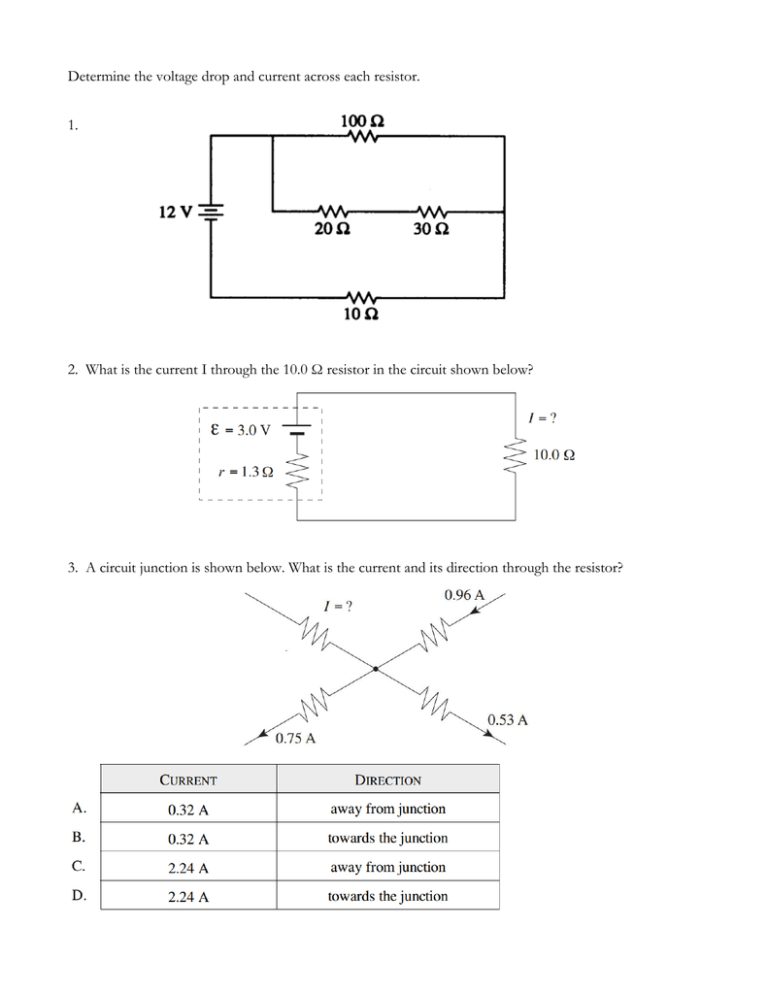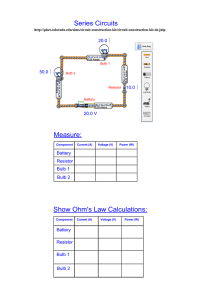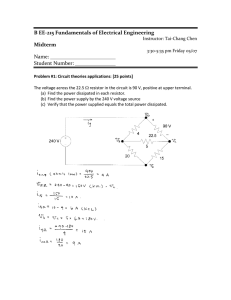Determine the voltage drop and current across each resistor. 1. 2
advertisement

Determine the voltage drop and current across each resistor. 1. 2. What is the current I through the 10.0 Ω resistor in the circuit shown below? 3. A circuit junction is shown below. What is the current and its direction through the resistor? 4. A student needs to connect a voltmeter to measure the potential difference across the parallel resistors in the circuit shown below. Across which two connection points should the student connect the voltmeter? A. U and Z B. X and Y C. X and W D. W and Z 5. Which of the following statements is true for the electric circuit shown below, regardless of the resistors used? 6. Three identical light bulbs are placed in a circuit as shown. Which of the following is correct? A. The voltage and current are the same for all three bulbs. B. The current in light bulb Z is less than the current in light bulb X. C. The current in light bulb Z is greater than the current in light bulb Y. D. The voltage across light bulb Z is less than the voltage across light bulb X. 7. A power source is providing a constant voltage, V, to the circuit shown below. The 8.0 Ω resistor is removed from the circuit. a. Does the equivalent resistance in the circuit increase, decrease, or remain the same? Justify your answer. b. Does the current through the 7.0 Ω resistor increase, decrease, or remain the same? Justify your answer. 8. Three identical resistors and arranged as shown below. Rank the equivalent resistance of the four circuits from high to low. Explain your answer. 9. A resistor is added in parallel to the 4.0 Ω resistor shown in the diagram below. a. Does the power dissipated by the 8.0 Ω resistor increase, decrease, or stay the same? Explain your answer. b. Does the power dissipated by the 4.0 Ω resistor increase, decrease, or stay the same? Explain your answer.




